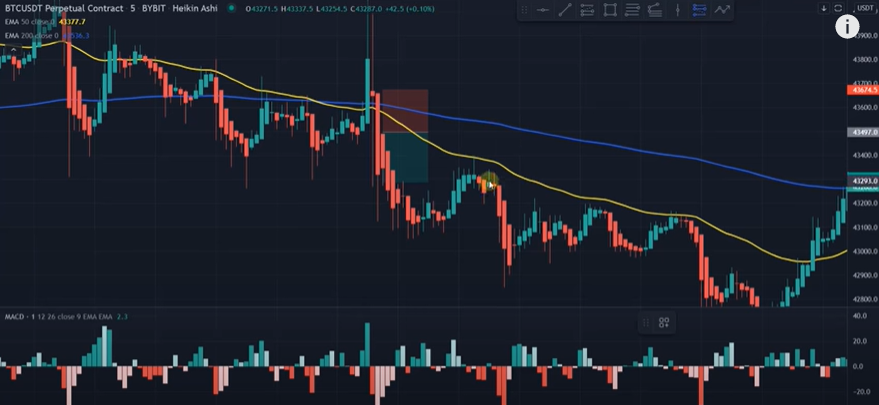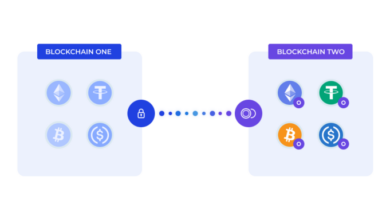
Scalping Crypto Daily Profit Strategies
Why Scalping Strategy Can Boost Your Daily Crypto Profits? This strategy, while demanding, can yield significant daily gains. We’ll delve into the intricacies of scalping, from understanding its core principles to mastering risk management and choosing the right cryptocurrencies. Learn how to harness technical indicators, optimize your trading platforms, and cultivate the mental fortitude essential for success.
Scalping, a high-frequency trading approach, involves taking quick profits from small price movements. This method demands rapid decision-making, deep understanding of market dynamics, and precise execution. We’ll dissect the technical indicators, risk management strategies, and psychological aspects that contribute to successful scalping. Expect a comprehensive guide to maximizing your daily crypto returns.
Understanding Scalping Strategies
Scalping, a high-frequency trading approach, aims to generate profits from small price fluctuations in the cryptocurrency market. It involves making numerous trades within a short timeframe, capitalizing on minute price movements. This strategy requires intense market analysis, rapid decision-making, and robust risk management to mitigate potential losses. Scalpers often rely on sophisticated technical indicators and automated trading systems.Scalping, at its core, hinges on the assumption that the market exhibits predictable short-term price patterns.
Successful scalpers possess a deep understanding of market sentiment, order flow, and the mechanics of price action. The strategy relies on identifying fleeting opportunities to capitalize on price discrepancies. It’s important to remember that scalping is not a get-rich-quick scheme; it demands a high degree of skill, discipline, and market knowledge.
Core Principles of Scalping
Scalping strategies are built upon a foundation of quick entries and exits. They are characterized by a focus on small, incremental profits, rather than large gains. A deep understanding of the market’s liquidity, order book, and price action is critical. These strategies often involve automated trading systems to execute trades rapidly and efficiently. Scalping strategies require rigorous risk management to control potential losses.
Scalping vs. Other Trading Strategies
Scalping differs significantly from other trading strategies. Day trading, for instance, involves holding positions open throughout the day, while scalping targets even shorter periods, often measured in minutes. Swing trading aims for medium-term gains from price fluctuations, which contrasts sharply with scalping’s focus on immediate profit. The table below highlights the key differences:
| Feature | Description | Example | Impact on Profitability |
|---|---|---|---|
| Time Horizon | Extremely short | Holding a position for minutes | High frequency of trades |
| Profit Target | Small, incremental gains | Profits of $5-$20 per trade | Requires numerous trades for significant returns |
| Risk Tolerance | High | Trades often executed with leverage | Potential for large losses if strategy fails |
| Market Knowledge | Extensive | Requires a deep understanding of order flow and market sentiment | Critical for identifying short-term trading opportunities |
Typical Entry and Exit Points
The success of a scalping strategy hinges on accurate entry and exit points. The following table provides illustrative examples:
| Scenario | Entry Point | Exit Point |
|---|---|---|
| Example 1 | Price at $29.99 | Price at $30.01 |
| Example 2 | Price at $0.00001075 BTC | Price at $0.00001080 BTC |
These examples show how scalping involves taking advantage of small price movements to generate profits. It’s important to note that these are simplified examples, and real-world scenarios often involve more complex patterns and market conditions.
Scalping can definitely boost your daily crypto profits, but it’s a high-risk strategy. While you might see quick gains, consistent passive income is often a better long-term approach. Consider exploring yield farming strategies, like those detailed in Understanding Yield Farming Strategies to Generate Consistent Passive Income , to potentially generate a more stable income stream. However, keep in mind that scalping, despite its volatility, can still be a part of a diversified portfolio to maximize short-term opportunities.
Technical Indicators for Scalping: Why Scalping Strategy Can Boost Your Daily Crypto Profits
Scalping in the crypto market demands lightning-fast reactions and precise timing. To achieve this, traders rely heavily on technical indicators, which analyze historical price and volume data to identify potential trading opportunities. These tools provide valuable insights into market sentiment and price movements, enabling scalpers to make informed decisions and capitalize on fleeting price fluctuations.Technical indicators offer a structured approach to analyzing market behavior.
Scalping strategies can definitely boost your daily crypto profits, but understanding the market’s nuances is key. While fast-paced trading can be lucrative, exploring other avenues like blockchain gaming can also offer new avenues for digital wealth. For instance, How Blockchain Gaming Is Creating New Digital Economic Opportunities highlights the innovative ways these games are fostering decentralized economies.
Ultimately, knowing when and how to capitalize on market fluctuations remains crucial for any successful scalping approach.
They translate complex market data into easily digestible signals, enabling scalpers to quickly assess trends and potential reversals. This allows for quick adjustments to trading strategies and maximizes profits from short-term price movements. Proper understanding and effective application of these indicators are paramount for success in crypto scalping.
Crucial Technical Indicators in Crypto Scalping
Understanding a variety of technical indicators is key to successful scalping. Recognizing patterns and trends allows traders to anticipate price movements and make timely entries and exits. The most crucial indicators include moving averages, Relative Strength Index (RSI), and volume indicators.
Moving Averages
Moving averages are calculated averages of price data over a specific period. They provide a smoothed view of price trends, helping to identify the overall direction of the market. Different timeframes can be used to pinpoint short-term trends.
Relative Strength Index (RSI)
The RSI measures the magnitude of recent price changes to evaluate overbought or oversold conditions. A reading above 70 often suggests an asset is overbought, potentially indicating a reversal. Conversely, a reading below 30 often signifies an asset is oversold, suggesting a potential upward trend.
Volume Indicators
Volume indicators analyze trading volume alongside price movements. These provide insights into market participation and the strength of price trends. Increased volume during a price move can confirm the validity of the trend, while low volume during a price change may indicate indecision or a weaker trend.
Candlestick Patterns
Candlestick patterns are visual representations of price movements over a specific time period. Recognizing specific candlestick formations can offer clues about potential price reversals and continuation patterns. For example, a doji candlestick often signals indecision, while a hammer candlestick might indicate a potential upward trend. Recognizing these patterns can provide valuable insights into short-term price actions.
Example of Using Candlestick Patterns in Scalping
Observe a bullish engulfing pattern. A bullish engulfing pattern forms when a black candlestick is followed by a white candlestick that completely encompasses the previous black candlestick. This signifies a potential shift in momentum, suggesting a trend reversal from bearish to bullish. This pattern often presents a scalping opportunity to enter a long position at the open of the following trading session.
Effectiveness Comparison of Indicators
The effectiveness of technical indicators varies depending on the specific market conditions and the scalper’s strategy. A table below provides a comparative overview of the effectiveness of different indicators for crypto scalping.
| Indicator | Description | Pros | Cons |
|---|---|---|---|
| Moving Averages | Calculates the average price over a specific period. | Smooths price data, identifies trends. | Can lag behind price movements, may not capture short-term fluctuations. |
| RSI | Measures the magnitude of recent price changes. | Identifies overbought/oversold conditions. | Can be prone to whipsaws (false signals). |
| Volume Indicators | Analyzes trading volume with price movements. | Provides insights into market strength. | Can be influenced by order flow manipulation. |
Risk Management in Scalping
Scalping, while offering the potential for high daily profits in the crypto market, demands meticulous risk management. Neglecting this crucial aspect can quickly lead to significant capital losses. A robust risk management strategy acts as a safety net, mitigating potential downsides and allowing traders to focus on the intricacies of the market without fear of devastating setbacks.Effective risk management in scalping involves understanding and implementing strategies that protect capital while still allowing for profitable trades.
This encompasses setting clear parameters for entry and exit points, employing protective orders, and carefully considering position sizing. Properly executed, these techniques can significantly increase the chances of success in the high-speed, high-stakes world of crypto scalping.
Stop-Loss Orders
Stop-loss orders are essential tools for safeguarding capital in scalping. They automatically close a position when the price of the asset reaches a predetermined level, preventing further losses. This is crucial in volatile markets, where prices can fluctuate rapidly. By setting a stop-loss, traders define a maximum acceptable loss for a particular trade.
A well-defined stop-loss order acts as a crucial line in the sand, preventing substantial capital erosion.
For example, if a scalper buys Bitcoin at $30,000 and sets a stop-loss at $29,500, the order automatically sells the Bitcoin if the price drops to that level, limiting the loss to $500.
Take-Profit Orders
Take-profit orders are equally important, defining predetermined price levels at which a position is automatically closed, securing profits. They ensure traders capture gains without being overly exposed to potential price reversals. These orders are critical in the scalping context, where quick profits are the name of the game.
Take-profit orders help traders lock in profits without the risk of missing out on potential gains.
For instance, if a trader buys Ethereum at $2,000 and sets a take-profit at $2,050, the order automatically sells the Ethereum when the price hits that level, securing a $50 profit.
Position Sizing
Position sizing is a vital risk management technique that dictates the appropriate amount of capital to allocate to each trade. It’s a crucial aspect of risk management, as it directly impacts the potential for both gains and losses. Proper position sizing ensures that no single trade can jeopardize a trader’s entire capital.
Position sizing is about understanding the appropriate amount of risk to take per trade.
A scalper with a $10,000 account might allocate $100 per trade. This way, even if a series of trades go south, the total capital loss remains manageable.
Risk Management Techniques in Crypto Scalping
Various risk management techniques are employed by scalpers. These include setting strict stop-loss levels, using trailing stops, and implementing diversification across various crypto assets. These techniques work together to safeguard capital and enhance the overall trading experience.
Common Risk Management Mistakes
| Mistake | Explanation | Prevention |
|---|---|---|
| Ignoring Stop-Loss Orders | Failing to set stop-loss orders leaves positions vulnerable to significant losses. | Always set stop-loss orders at a predetermined level to limit potential losses. |
| Over-Leveraging | Taking on excessive risk by using high leverage can lead to substantial losses in a short period. | Maintain a conservative leverage level that aligns with the trader’s risk tolerance. |
| Chasing Losses | Trying to recover losses by continuing to trade when the market is against the trader can lead to further losses. | Recognize market downturns and take a break or adjust the strategy. |
| Lack of Diversification | Concentrating all capital on a single asset exposes the trader to significant risk. | Diversify positions across different crypto assets to mitigate risks. |
Tools and Platforms for Scalping
Scalping in the cryptocurrency market requires specialized tools and platforms to effectively execute trades and manage risk. Choosing the right tools is crucial for success, as it directly impacts the speed and accuracy of your trades. This section explores the key platforms and tools utilized by scalpers, highlighting their features and the significance of real-time data and charting.
Furthermore, we will examine the importance of backtesting in optimizing scalping strategies.The crypto scalping landscape is rapidly evolving, and staying informed about new platforms and tools is essential for staying competitive. The best platforms provide real-time market data, advanced charting capabilities, and efficient order execution, all critical for the quick trades that define scalping.
Popular Crypto Scalping Platforms
Numerous platforms cater to crypto scalping, each with its own strengths and weaknesses. The choice often depends on individual trading styles and preferences. Key features that differentiate these platforms include order types, charting capabilities, and real-time market data feeds. The ability to handle high-frequency trades is paramount.
- TradingView: A popular platform known for its comprehensive charting tools, which allow for in-depth analysis of market trends. TradingView’s extensive library of technical indicators, drawing tools, and customizable dashboards supports in-depth analysis and pattern recognition, crucial for scalping strategies. It provides real-time data feeds, enabling traders to react quickly to market fluctuations. Integration with various brokers and exchanges allows for seamless trade execution.
- eToro: eToro provides a user-friendly platform for both beginners and experienced traders. While not explicitly designed for high-frequency trading, its real-time data and charting features can support scalping strategies. It offers leverage and margin options that can amplify profits or losses, which is a consideration for scalping strategies.
- Kraken: Kraken is a popular cryptocurrency exchange known for its robust trading tools and API access. Its API allows for automated trading, which is essential for implementing scalping strategies. The exchange offers advanced order types and a low latency trading environment, crucial for capturing short-term price movements.
Real-Time Data and Charting
Real-time data is the lifeblood of scalping. Without accurate and up-to-the-second information, scalpers risk missing critical market movements. High-quality charting tools are equally important, enabling traders to visualize trends, identify patterns, and place trades based on real-time data analysis.The precision of real-time data feeds directly affects a scalper’s ability to execute trades effectively. Delays in data transmission can lead to missed opportunities and reduced profits.
Real-time market data, coupled with advanced charting tools, enables traders to identify potential entries and exits. Sophisticated charting tools often include multiple timeframes, customizable indicators, and advanced drawing tools to aid in identifying patterns and making informed trading decisions.
Comparing Platform Functionalities
Different platforms offer varying levels of functionality, which must be evaluated to determine suitability for scalping. Factors like order types, execution speed, and the availability of technical indicators should be considered.
| Platform | Order Types | Execution Speed | Technical Indicators |
|---|---|---|---|
| TradingView | Limited (requires broker integration) | Dependent on broker | Extensive |
| eToro | Standard, but not designed for high-frequency | Moderate | Standard |
| Kraken | Advanced, including limit orders, stop orders, and market orders | High | Extensive |
Recommended Tools for Scalping
- TradingView: Offers extensive charting tools, technical indicators, and a customizable interface. Its ability to integrate with various brokers makes it versatile for scalping.
- Cyptohopper: Known for automated trading features, Cryptohopper enables traders to set up and execute scalping strategies automatically. It offers backtesting capabilities and can be a powerful tool for optimizing trading strategies.
- 3Commas: Another popular automated trading platform, 3Commas allows for advanced order types, such as trailing stops and take profits, which are crucial for scalping. Its backtesting capabilities enable traders to optimize their strategies.
Backtesting and Strategy Optimization
Backtesting is a crucial step in optimizing scalping strategies. It involves testing a strategy on historical data to assess its potential profitability and risk profile.
“Backtesting helps identify potential weaknesses in a strategy before implementing it on live markets.”
By simulating trades on historical data, scalpers can refine their strategies, adjust parameters, and improve overall performance. Backtesting provides valuable insights into a strategy’s potential profitability, risk levels, and consistency. Accurate historical data and appropriate simulation parameters are vital for producing reliable backtesting results.
Psychological Aspects of Scalping

Source: ytimg.com
Scalping, the high-frequency trading strategy of capitalizing on small price fluctuations, demands exceptional mental fortitude. It’s not just about technical analysis; it’s about managing the intense pressure and emotional rollercoaster that comes with constantly monitoring markets and making split-second decisions. Understanding the psychological aspects is crucial for success, as a lack of emotional control can quickly lead to significant losses.The relentless pace and pressure of scalping can easily overwhelm even experienced traders.
The constant need to react to market changes, coupled with the inherent risk of losing trades, can trigger negative emotions such as anxiety, fear, and frustration. Recognizing and managing these emotions is paramount to achieving consistent profitability.
Mental Fortitude Required for Successful Scalping
Success in scalping hinges on maintaining a strong mental state. This requires unwavering discipline, patience, and a resilient mindset. Traders must be able to withstand periods of losing trades without succumbing to panic or impulsive decisions. The ability to objectively analyze market data and make calculated decisions, even under pressure, is essential. A trader must also possess a clear understanding of their risk tolerance and adhere to a well-defined trading plan.
Potential Psychological Pitfalls of Scalping, Why Scalping Strategy Can Boost Your Daily Crypto Profits
Scalping presents several psychological pitfalls that can significantly impact trading performance. Fear of missing out (FOMO) can lead to impulsive trades, while fear of loss (or risk aversion) can cause traders to miss profitable opportunities. Overconfidence, on the other hand, can lead to over-leveraging or ignoring warning signs. Another potential pitfall is chasing losses, which often results in further financial damage.
Ultimately, recognizing and mitigating these pitfalls is crucial for long-term success.
Strategies for Managing Emotions During Scalping
Effective emotion management is vital for consistent scalping success. Establishing a well-defined trading plan that Artikels entry and exit points, risk tolerance, and position sizing is a first step. Disciplined adherence to this plan, even during emotionally charged market conditions, is essential. Utilizing mindfulness and meditation techniques to calm the mind and improve focus can be highly beneficial.
Regular self-assessment and feedback are crucial for identifying and addressing any negative patterns.
Examples of Successful Scalpers and Their Approaches to Managing Emotions
While specific examples of successful scalpers are often kept private, some common themes emerge. Successful scalpers often prioritize a structured approach to trading, including strict adherence to pre-defined risk management rules. They utilize psychological tools to manage stress and anxiety, such as mindfulness or meditation. Successful scalpers tend to have a strong understanding of their own emotional triggers and have developed strategies to avoid falling prey to these traps.
Significance of Patience and Discipline in Scalping
Patience and discipline are cornerstones of successful scalping. Scalping requires a high degree of patience as profits are often realized through a series of small, incremental gains rather than large, quick wins. Disciplined execution of a trading plan, especially during periods of volatility, is critical to avoid emotional decision-making. Impatience can lead to hasty trades and significant losses.
Avoiding Common Emotional Traps During Scalping
To avoid common emotional traps in scalping, traders must cultivate a realistic mindset. A crucial aspect of this is recognizing the inherent volatility of the market and accepting that losses are part of the process. Developing a robust risk management plan and sticking to it, even during periods of losing trades, is essential. Avoiding the temptation to chase losses or to trade impulsively is also vital.
Trading should be treated as a business, not a gamble, requiring a systematic and disciplined approach.
Adapting Strategies to Different Cryptocurrencies

Source: ytimg.com
Scalping in the cryptocurrency market demands a nuanced approach. While the core principles of scalping—identifying fleeting price movements and capitalizing on them—remain constant, the specific strategies need tailoring to each cryptocurrency’s unique characteristics. Volatility, liquidity, and market structure all play a crucial role in determining the effectiveness of a scalping strategy.Different cryptocurrencies exhibit varying degrees of price volatility and liquidity.
Understanding these differences is fundamental to crafting successful scalping strategies. A strategy effective for one coin might prove disastrous on another. This section delves into adapting strategies based on cryptocurrency specifics, analyzing volatility and liquidity impacts, and comparing scalping approaches across various digital assets.
Volatility and Liquidity Impact on Scalping
Volatility, the rate at which prices fluctuate, directly influences scalping opportunities. Highly volatile coins present more frequent and potentially larger price swings, offering greater potential for profit but also increasing risk. Conversely, less volatile coins might offer smaller, but more predictable, profit margins. Liquidity, the ease with which a coin can be bought or sold, is equally critical.
Scalping strategies can definitely boost your daily crypto profits, but understanding market cycles is key. Knowing when to buy and sell, which is deeply connected to analyzing broader market trends, like those detailed in Analyzing Market Cycles to Make Better Cryptocurrency Investment Decisions , is crucial for long-term success. Ultimately, combining a scalping strategy with a keen awareness of market cycles is the most effective approach to maximize your daily crypto profits.
Low liquidity coins can lead to slippage, where the executed price deviates significantly from the intended price. This slippage can erode profits and render scalping less viable.
Differences in Scalping Approaches for Different Cryptocurrencies
The characteristics of a cryptocurrency significantly impact the scalping approach. For instance, a high-volume, highly liquid coin like Bitcoin might benefit from strategies focusing on quick, small-scale trades. On the other hand, a less liquid altcoin might require a more cautious, longer-term approach with a focus on identifying and exploiting larger price movements. These differences in scalping approaches stem from the inherent differences in trading volumes, order book structures, and price action patterns.
Comparison of Scalping Strategies Across Cryptocurrencies
The effectiveness of scalping strategies varies considerably across different cryptocurrencies. While scalping can be profitable on various assets, the profitability and risk levels differ greatly. Bitcoin, with its high liquidity and volatility, often lends itself to frequent, small trades. Altcoins, with their fluctuating liquidity and volatility, may demand more nuanced strategies to account for potential slippage and market fluctuations.
Choosing the Right Cryptocurrencies for Scalping
Selecting the right cryptocurrencies for scalping hinges on a thorough understanding of their market dynamics. High liquidity and relatively high volatility are key characteristics to look for. Assessing trading volume, order book depth, and historical price patterns is essential to predict potential price movements. Researching past performance and current market sentiment can also help gauge the potential success of a scalping strategy.
For example, a cryptocurrency with a strong community and increasing adoption often demonstrates higher trading volume and greater price stability, making it more suitable for scalping.
Scalping Strategies for Bitcoin and Ethereum
| Feature | Bitcoin | Ethereum |
|---|---|---|
| Volatility | Moderately high, with periods of high volatility and sharp price swings. | Moderately high, but often less volatile than Bitcoin, with potential for large price movements. |
| Liquidity | Extremely high, allowing for rapid and efficient trades. | High, supporting a reasonable pace of trades, but potentially less liquid than Bitcoin in certain market conditions. |
| Scalping Strategy | Focus on quick, small-scale trades utilizing technical indicators to identify short-term price movements. | Similar to Bitcoin, but potentially with more emphasis on identifying patterns in order book depth and considering the Ethereum network’s impact on transaction times. |
Summary

Source: googleusercontent.com
In conclusion, while scalping presents unique challenges, mastering its nuances can lead to significant daily crypto profits. By meticulously understanding the technical indicators, implementing robust risk management, and cultivating mental fortitude, you can harness the power of scalping. Remember, this strategy requires constant learning and adaptation to market fluctuations, making continuous improvement essential for long-term success.
Frequently Asked Questions
What’s the difference between scalping and day trading?
Scalping focuses on extremely short-term trades (minutes), while day trading involves holding positions for the entire day. Scalping involves much higher trade frequency.
What are some common mistakes in scalping?
Ignoring risk management, failing to use stop-loss orders, and not adapting to market volatility are frequent pitfalls. Overtrading and emotional decision-making can also significantly impact profitability.
What cryptocurrencies are best suited for scalping?
Cryptocurrencies with high liquidity and volatility are generally more suitable for scalping strategies. Factors like trading volume and price fluctuations influence the potential for profitable trades.
How can I choose the right crypto for scalping?
Consider factors like volume, volatility, and market sentiment. Thorough research and analysis of market trends are essential.






